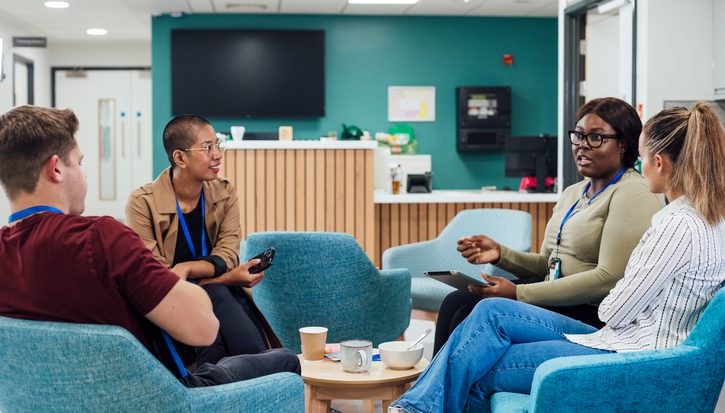Building tech-powered public services
Article
Can technology improve the experience of people using public services, or does it simply mean job losses and a depersonalised offer to users?
Could tech-powered public services be an affordable, sustainable solution to some of the challenges of these times of austerity?
This report looks at 20 case studies of digital innovation in public services, using these examples to explore the impact of new and disruptive technologies. It considers how tech-powered public services can be delivered, focusing on the area of health and social care in particular.
We identify three key benefits of increasing the role of technology in public services: saving time, boosting user participation, and encouraging users to take responsibility for their own wellbeing.
In terms of how to successfully implement technological innovations in public services, five particular lessons stood out clearly and consistently:
- User-based iterative design is critical to delivering a product that solves real-world problems. It builds trust and ensures the technology works in the context in which it will be used.
- Public sector expertise is essential in order for a project to make the connections necessary to initial development and early funding.
- Access to seed and bridge funding is necessary to get projects off the ground and allow them to scale up.
- Strong leadership from within the public sector is crucial to overcoming the resistance that practitioners and managers often show initially.
- A strong business case that sets out the quality improvements and cost savings that the innovation can deliver is important to get attention and interest from public services.
The seven headline case studies in this report are:
- Patchwork creates an elegant solution to join up professionals working with troubled families, in an effort to ensure that frontline support is truly coordinated.
- Casserole Club links people who like cooking with their neighbours who are in need of a hot meal, employing the simplest possible technology to grow social connections.
- ADL Smartcare uses a facilitated assessment tool to make professional expertise accessible to staff and service users without years of training, meaning they can carry out assessments together, engaging people in their own care and freeing up occupational therapists to focus where they are needed.
- Mental Elfmakes leading research in mental health freely available via social media, providing accessible summaries to practitioners and patients who would not otherwise have the time or ability to read journal articles, which are often hidden behind a paywall.
- Patient Opinion provides an online platform for people to give feedback on the care they have received and for healthcare professionals and providers to respond, disrupting the typical complaints process and empowering patients and their families.
- The Digital Pen and form system has saved the pilot hospital trust three minutes per patient by avoiding the need for manual data entry, freeing up clinical and administrative staff for other tasks.
- Woodland Wiggle allows children in hospital to enter a magical woodland world through a giant TV screen, where they can have fun, socialise, and do their physiotherapy.
Related items

Rule of the market: How to lower UK borrowing costs
The UK is paying a premium on its borrowing costs that ‘economic fundamentals’, such as the sustainability of its public finances, cannot fully explain.
Restoring security: Understanding the effects of removing the two-child limit across the UK
The government’s decision to lift the two-child limit marks one of the most significant changes to the social security system in a decade.
Building a healthier, wealthier Britain: Launching the IPPR Centre for Health and Prosperity
Following the success of our Commission on Health and Prosperity, IPPR is excited to launch the Centre for Health and Prosperity.